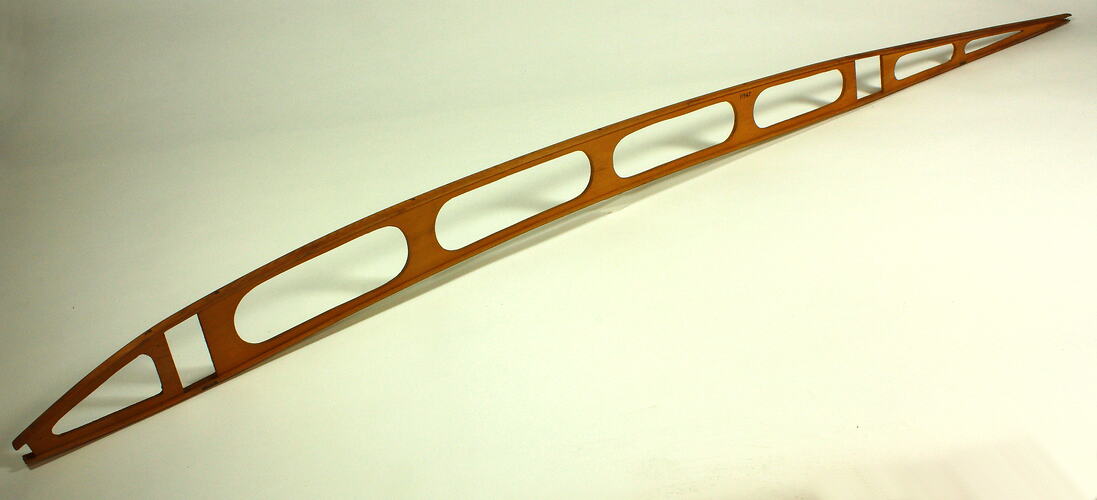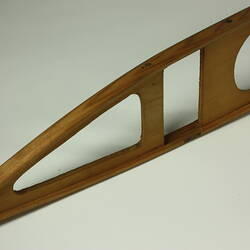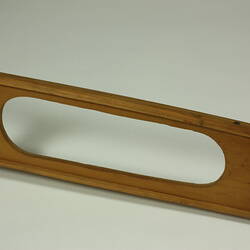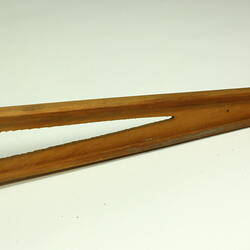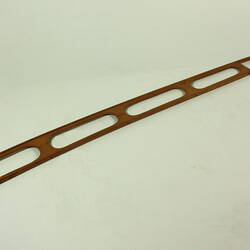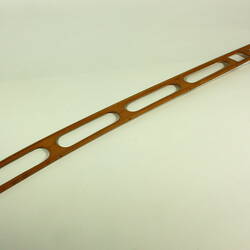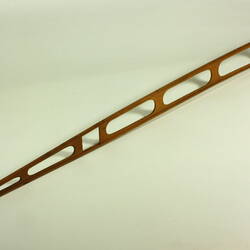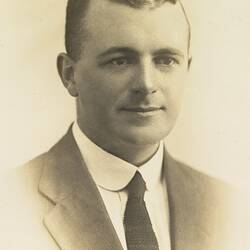Summary
Aerofoil-shaped wooden wing rib probably made from spruce. Associated with a Sopwith type single-seat biplane constructed by the donor's son, Basil Watson, in July-October 1916. The rib appears to have been a spare or test piece but is identical to the ribs used in the actual plane wings, as seen in photograph (MM 143492) of the plane under construction. It is possibly one of two spare wing ribs that can be seen lying on the floor against the skirting board in the photograph (MM 143494).
Basil Watson was introduced to flying by Harry Hawker during an Australian publicity tour in early 1914, and subsequently travelled to England with Hawker, where he undertook flying lessons and worked as an engineer with the Sopwith Aviation Company. After the outbreak of WWI he was seconded to the British Government as a military test pilot, based at Brooklands aerodrome. He was severely injured in a crash after suffering an engine failure on take-off during a test flight in June 1915, and returned to Australia 12 months later, after being declared medically unfit for further military service. After constructing his own biplane from scratch at his parent's home in Elsternwick, in little more than 3 months, Watson piloted the aircraft on pioneering flights to Bendigo, western Victoria and Mount Gambier. He performed the first public aerial acrobatics flying demonstrations for crowds of spectators in Melbourne and country towns, and flew the first official airmail between Mt Gambier and Melbourne in February 1917. He was killed on 28th March 1917 when his aircraft crashed in shallow water in Port Phillip Bay, after a structural failure occurred as he performed an aerobatics display over Point Cook, Victoria. His death was the earliest recorded aviation fatality in Australia.
Presented to the Museum in 1919 by James Isaac Watson, father of Basil Watson, together with the Gnome aero engine, several spare parts and other items salvaged from the wreckage of the crashed aircraft.
Physical Description
Composite wooden rib, fabricated from two curved slotted top and bottom rails of lightweight solid timber glued and nailed to a central plywood web, which has seven cut-outs with rounded corners to reduce weight and two rectangular holes for the longitudinal wing spars.
More Information
-
Collection Names
-
Collecting Areas
-
Acquisition Information
Donation from James I. Watson, 28 Oct 1919
-
Classification
-
Category
-
Discipline
-
Type of item
-
Overall Dimensions
155 cm (Length)
-
Keywords
Aeroplane Components, Aircraft, Aircraft Manufacture, Aircraft Wings, Aviation, Aviation Pioneers, Biplanes, World War I, 1914-1918
